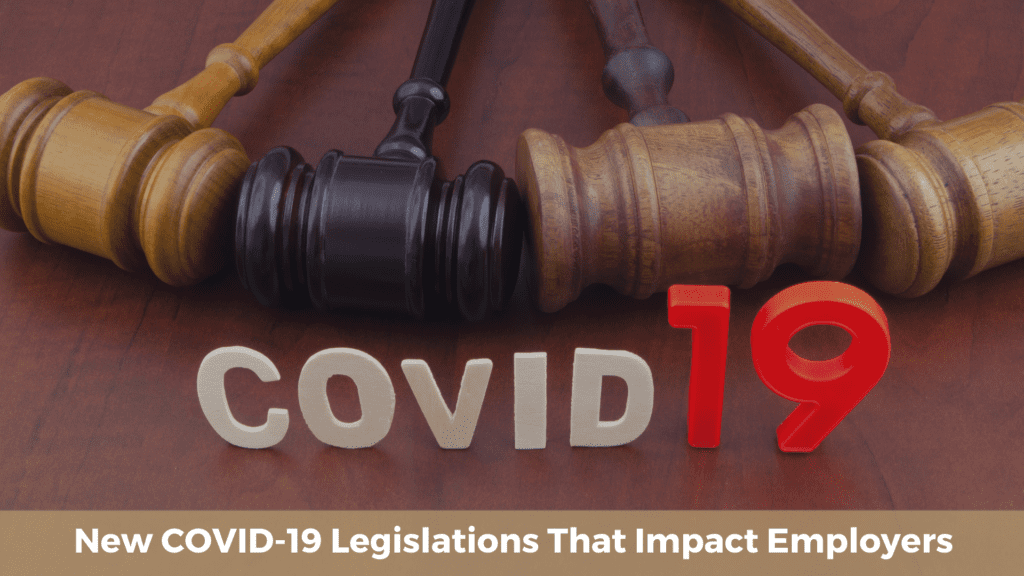This article is brought to you with information from our friends at HR|Bizz
On September 17, 2020, two new pieces of legislation that affect how employers address COVID-19 in the workplace were passed. One is Assembly Bill 685 (AB685), which aims to better protect non-remote employees from COVID-19 exposure and allows California to track COVID-19 cases in the workplace more closely. Here is what AB685 is and what it means for your business.
What is AB685?
Effective on January 1, 2021, Assembly Bill 685 (AB685) imposes new notice and reporting obligations for COVID-19 exposure in the workplace. Here are the changes employers should prepare for:
New Notice Requirements
AB685’s new notice requires employers to provide the following notices within one business day of a “potential exposure” due to a positive confirmed case of COVID-19 in the workplace:
- Provide written notice to all employees, and employers of subcontracted employees who were at the worksite within the infectious period. As a best practice, we recommend employers to notify any third parties who were at the worksite during the infectious period.
- Provide written notice to employee representatives, including unions and sometimes attorneys, who may represent employees.
- Provide written notice to employees and/or employee representatives regarding COVID-19-related benefits available, including workers’ compensation benefits, COVID leave, paid sick leave, and the company’s anti-discrimination, anti-harassment, and anti-retaliation policies; and
- Provide notice to employees regarding the company’s disinfection protocols and safety plan to eliminate any further exposures, per CDC guidelines.
New COVID-19 Exposure Reporting
AB685 requires an employer with a large number of cases (that meet the definition of a COVID-19 outbreak) to report certain information to the local public health agency within 48 hours of learning of the outbreak.
In addition, for COVID-19-related fatalities, the employer must notify the local health department with the following information:
- Names, numbers, occupation, and worksite of employees who died due to a COVID-19 exposure; and
- The business address and North American Industry Classification System (NAICS) code of the worksite where the COVID-19-positive employee worked.
Changes to The Normal Cal/OSHA Process
AB685 expands Cal/OSHA’s authority to issue Orders Prohibiting Use (OPU), or Stop Work Orders, for workplaces that pose a risk of an “imminent hazard” relating to COVID-19, essentially fast-tracking the timeline for issuing serious citations.
It gets rid of the “1BY” notice issued by the agency of its intent to issue a “serious” citation as well as the 15-day period that allows employers to provide additional evidence to support their defense. This means that employers no longer have the opportunity to:
- “Preview” Cal/OSHA’s serious allegations;
- Submit evidence to address those allegations; or
- Have a discussion with the Division before the serious citation is issued.
What does AB685 mean for employers?
Especially in light of the changes to the Cal/OSHA process, employers should closely monitor the statute of limitations to ensure that once they receive a citation, they immediately evaluate the classifications, allegations, and proposed penalties. Employers should also be vigilant in implementing their COVID policies and producing the required documents to Cal/OSHA during an investigation. Even if a document request is complete, employers will not have an opportunity to raise legal defenses until after the Division issues the serious citations.
We recommend that employers create a COVID-19 “action plan” that identifies the workplace’s risks and determines how to control exposure through specific measures, like social distancing and wearing protective gear. The plan should also how the employer will enforce its procedures, provide training, conduct inspections, and review its processes for effectiveness.
Next Steps for Employers
Although AB685 doesn’t go into effect until January 1, 2021, we recommend employers to consult counsel whenever:
- There is a positive confirmed case of COVID-19; and
- Cal/OSHA contacts them or if an inspector appears at the employer’s worksite.
COVID-19 continues to be a volatile situation and compounded with new California legislation, navigating the constantly changing legal landscape can be very complicated. If you need any assistance or guidance on the best way to approach COVID-19 in the workplace.
DISCLAIMER: Content within this post should not be considered legal advice and is for informational purposes only. Communications made through this post do not create an attorney-client relationship. Hackler Flynn & Associates is not responsible for any content that you may access from third-party resources that may be accessed through or linked to this post. Hackler Flynn & Associates is only licensed to practice in California.
On September 17, 2020, Senate Bill 1159 (SB1159), along with Assembly Bill 685 (AB685), was signed. Formalizing Executive Order N-62-20 which expired on July 5, 2020, SB1159 creates a new framework for COVID-19-related workers’ compensation claims. Here is a detailed look at what SB1159 is and how it affects your business.
What is SB1159?
California Senate Bill 1159 (SB1159) codifies the COVID-19 presumption created by Executive Order N-62-20 and provides two new rebuttable presumptions that an employee’s illness related to COVID-19 is an occupational injury, and therefore eligible for workers’ compensation benefits if specified criteria are met.
As emergency legislation, this bill is effective immediately, retroactive to July 06, 2020, and will remain in effect until January 1, 2023. If an employee suffers an illness or death resulting from COVID-19 after January 1, 2023, the presumption no longer applies and the case will be treated under the traditional workers’ compensation framework.
As standard practice, employees injured in the course and scope of employment are entitled to receive workers’ compensation benefits for their injuries. Existing law establishes a series of specific injuries and illnesses that are presumed to be “industrial” in nature and creates a rebuttable presumption that will qualify them for workers’ compensation benefits immediately – unless an employer can provide sufficient information to indicate that the injury or illness is non-industrial. Due to the unique challenges brought forth by the COVID-19, SB1159 now creates a similar presumption for illness or death resulting from COVID-19. Here are the changes employers should prepare for:
Codification of Executive Order N-62-20
Under Executive Order N-62-20, issued on May 6, 2020, the workers’ compensation rebuttable presumption was expanded to include any employee who reported to their place of employment between March 19 and July 5, 2020, and who tested positive for or was diagnosed with COVID-19 within the following 14 days during that time period.
SB1159 takes this rebuttable presumption and extends the period to include any employee who suffers illness or death resulting from COVID-19 on or after July 6, 2020 until January 1, 2023.
New Criteria for Rebuttable Presumptions
SB1159 also lengthens the rebuttable presumption beyond July 6, 2020 for firefighters, peace officers, fire and rescue coordinators, and certain kinds of health care and health facility workers, including in-home supportive services providers that provide services outside their own home.
For health facility employees other than those who provide direct patient care as well as custodial employees in contact with COVID-19 patients, the presumption does not apply if the employer can show the employee did not have contact with a COVID-19 positive patient within the 14-day period.
For all other employees, the “rebuttable presumption” is only applied if:
- The employee works for an employer with five (5) or more employees; and
- The employee tests positive for COVID-19 within 14 days after reporting to their place of employment during a COVID-19 “outbreak” at the employee’s specific workplace.
New Reporting Requirements for Outbreaks
An outbreak exists if, within fourteen (14) days, one of the following occurs at a specific place of employment:
- Four employees test positive if the employer has 100 employees or fewer;
- Four percent (4%) of the number of employees who reported to the specific place of employment test positive if the employer has more than 100 employees; or
- A specific place of employment is ordered to close by a local public health department, the State Department of Public Health, the Division of Occupational Safety and Health, or a school superintendent due to a risk of infection of COVID-19.
For purposes of the “outbreak” presumption, SB1159 requires employers to report to their claims administrator in writing (via e-mail or fax) within three (3) business days when they know or reasonably should know that an employee has tested positive for COVID-19, along with other relevant information:
- Information on the employee who has tested positive. This should not include personally identifiable information regarding the employee who tested positive unless the employee asserts the infection is work-related or has filed a claim form pursuant to Labor Code Section 5401.
- The date the employee tests positive—this is the date the specimen was collected for testing.
- The address or addresses of the employee’s specific place(s) of employment during the 14-day period preceding the date of the employee’s positive test.
- The highest number of employees who reported to work at the employee’s specific place of employment in the 45-day period preceding the last day the employee worked at each specific place of employment.
Following these reporting requirements is crucial. Employers may be subject to civil penalties of up to $10,000 for intentionally submitting false or misleading information, or for failing to report required information.
What does SB1159 mean for employers?
Since SB1159 is effective immediately, employers need to be vigilant and prepared to respond to any indication that an employee has contracted COVID-19. They should coordinate with their workers’ compensation insurance carriers and claims adjusters to establish best practices for reporting and responding to potential workers’ compensation claims based on COVID-19.
We encourage employers to comply with local health orders and industry-specific guidance for safely reopening. In addition, we recommend employers to gather ongoing evidence, such as:
- Measures in place to reduce potential transmission of COVID-19 in the employee’s place of employment,
- The employee’s non-occupational risks of COVID-19 infection,
- Statements made by the employee; and
- Any other evidence normally used to dispute a work-related injury.
Next Steps for Employers
The passage of SB1159 shows that employers must follow guidelines and take all reasonable steps to keep their workforces safe and healthy as California continues the process of re-opening. To take full advantage of this rebuttable presumption, we recommend that employers and claim administrators quickly investigate each positive test and obtain evidence in all forms.


